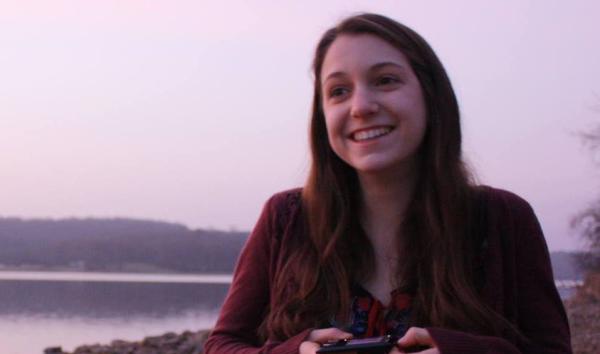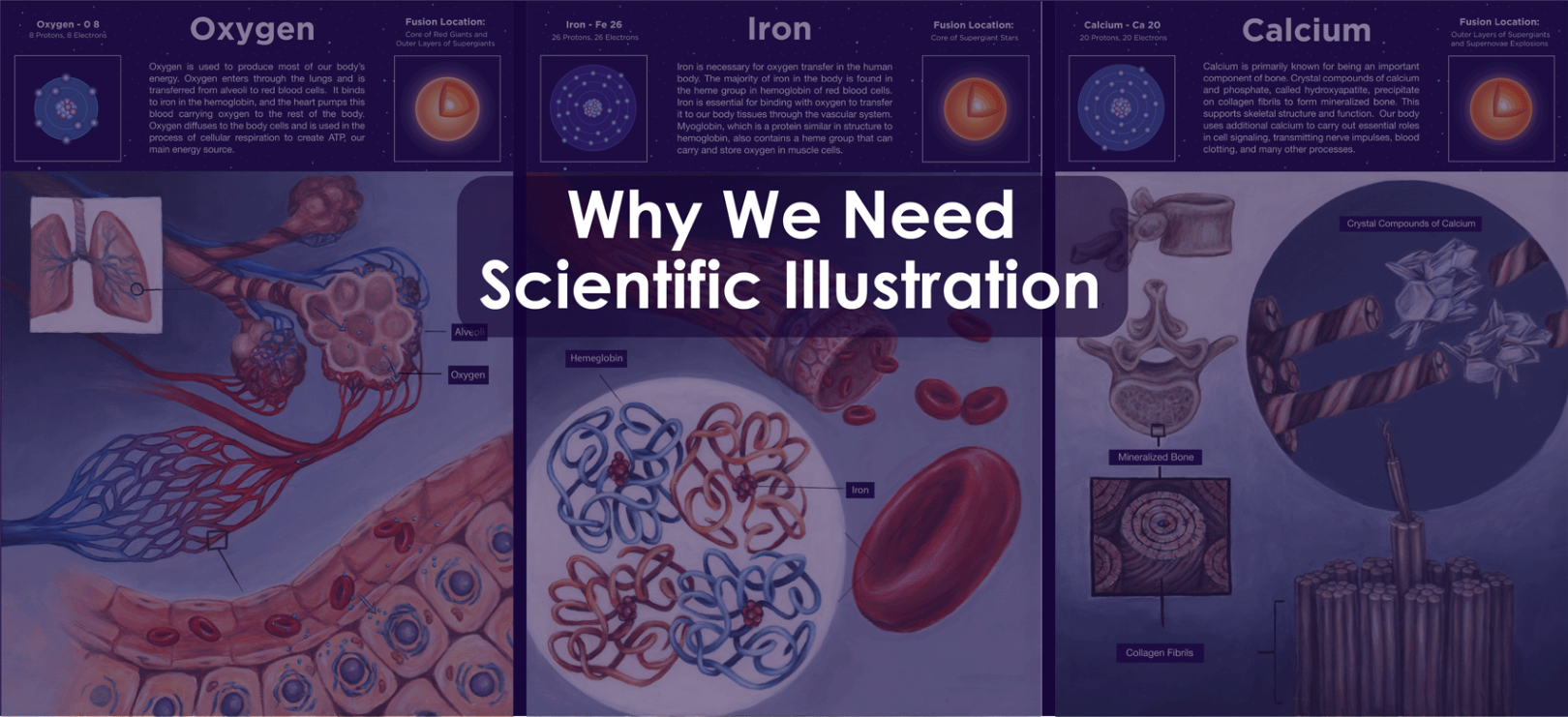
Date:
If you haven’t read the first blog post, “Scientific Illustration: What is it?” go check it out to learn more!
Now that you know what scientific illustration is, you might wonder why it is so important. We have cameras that can instantly take photographs, so why do we need illustration?
Seeing the New & Unknown
Not everything can be captured by photography or video. As scientists delve into the unknown of nanoparticles, extinct species, sub-cellular processes, and dark matter, our cameras can fail us. An artist who is educated on the topic and collaborates with professionals and researchers can visualize and bring these subjects to life to help others better understand them.
The need for visual artists trained in the sciences is growing as technology and science become more advanced. We are now able to perceive information and collect data of processes and objects at extremely small and massive scales without being able to see them. Artists can take this data and create comprehensible illustrations to show these unseen objects and create a depiction of what the scientists learn from the data.
In all stages of science communication, from childhood interest, to secondary education, to professionals and research, illustrators step in to translate the information into materials that fit the needs of individuals at every level of understanding. The ability to transform and craft compelling images, charts, and models that provide accurate information is a skill unique to the scientific illustrator.
Will Photography Replace Scientific Illustration?
The short answer is no. Photography is a wonderful tool that can be used for both art and technical purposes, but it will not replace the role of the scientific artist or illustrator.
As technology has developed, the field of scientific illustration has changed to meet the needs of scientists and educators.
Scientific artwork is still essential even though photography is becoming more advanced. The role of the scientific artist now frequently includes the visualization of microscopic or macroscopic (large-scale) and sub-cellular processes that cannot photographed. This involves the skillful fusion of different creative thinking as well as scientific understanding of the subject in order to craft an accurate depiction of the subject.
Technology used to capture images has become impressive and can now be used to photograph both large and small subjects, however it have its restrictions. Scanning electron microscopes and other technologies can produce imagery of microscopic subjects up to a certain size, but there are still limits on the ability to photograph subjects on the atomic scale. Telescopes on earth and in space (such as the Hubble Space Telescope) can be used to view and capture images of distant planets and celestial objects. However, as many objects in distant space are out of range of our telescopes, and the missions and telescopes we send into outer space have limitations on how far they go, the quality and detail of these photographs and images can lack important information.
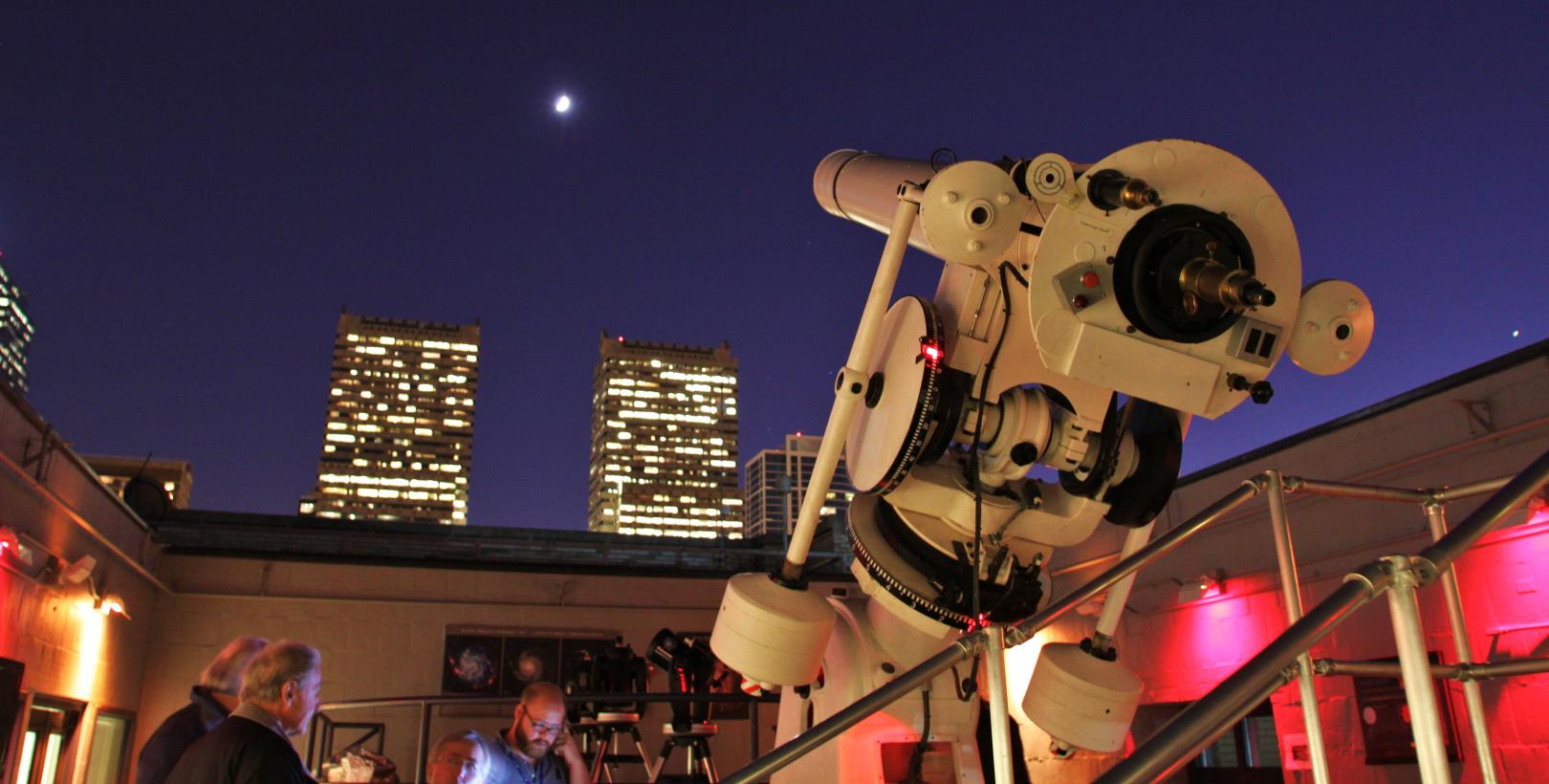
This is where the illustrator steps in to fill the in the blanks. Artists can help depict both submicroscopic objects too small to be seen by a microscope and the massive objects in distant space that we are unable to otherwise picture. Using scientific information and artistic knowledge the illustrator can render atoms and atomic processes in either highly complex or more simplified forms that capture the important information of how these atoms are structured. On the other end of the size spectrum, artists can also help create images of celestial objects in distant space that our telescopes and cameras cannot capture. This helps bring the science and data into a tangible form that aids both in understanding and in interest of these subject.

Helium Fusion (left) and Oxygen use in the Human Body (right), Illustrations by Kara Perilli
Photography is only one tool in making images, and though it has its limits, it can be used in combination with other tools. Illustrators can layer elements over photographs, utilizing the photograph in combination with other artwork in order to provide multiple layers of information in a more complex piece. Illustration can work to fill in the gaps, and render the subjects more clearly in isolation while selecting the necessary elements and eliminating anything unwanted. Artwork also holds the ability to create cross-sections and reveal the inner workings of a subject while still showing the context of the exterior in a way that photography cannot. For example, the illustrations below depicts digitally painted portraits that show all recognizable facial features while revealing the underlying structures of the muscles, bones, glands, and arteries in the face and neck.
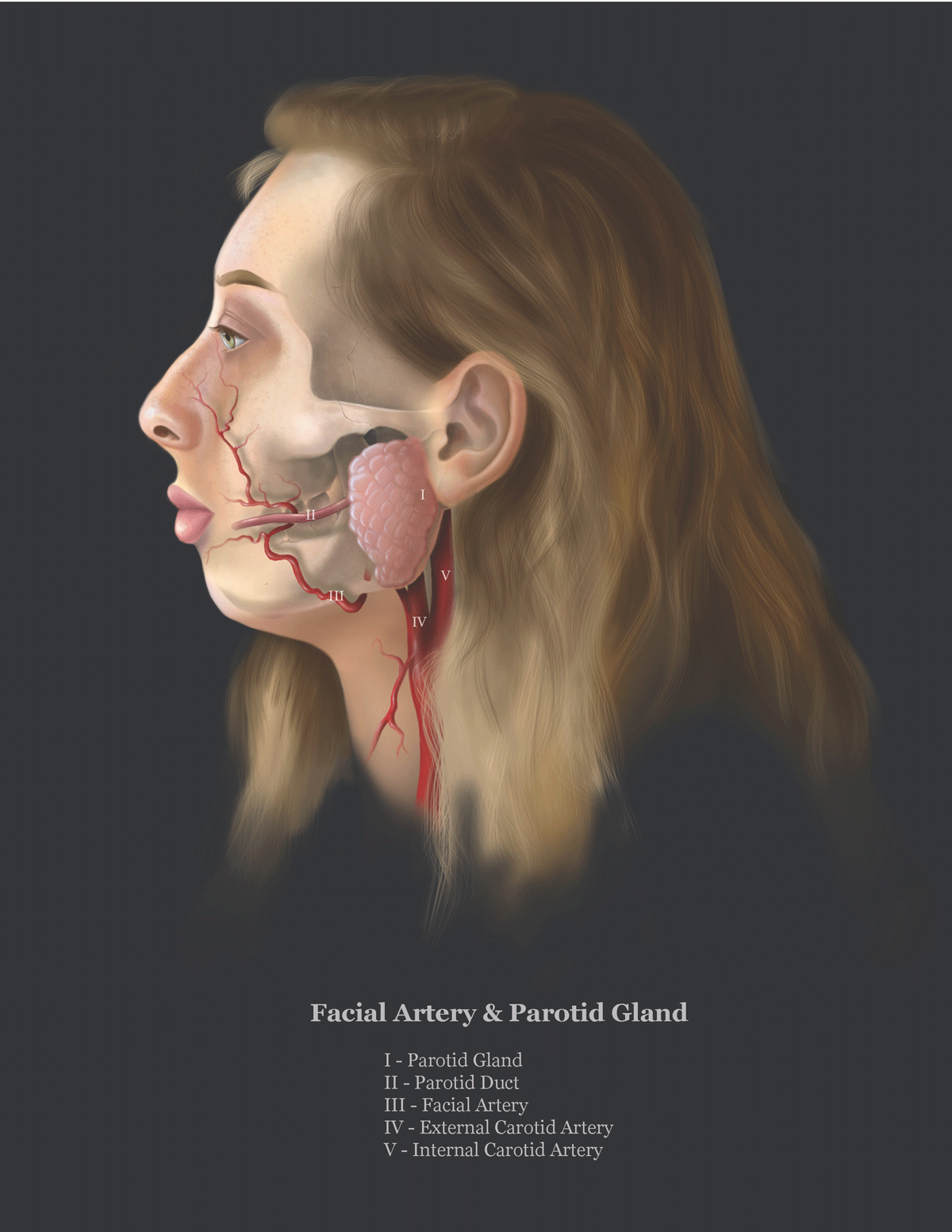
Facial Artery & Parotid Gland (left) and Muscles of the Face (right), Illustrations by Julia Lunavictoria
Artist are essential when creating images of extinct creatures. Since most of these extinct animals existed before cameras were invented, and the recorded information or drawings of these species are limited, the scientific illustrator plays a crucial role in depicting an accurate appearance of these animals. The artist creates a reconstruction illustration or model of the species by using the data, fossil record, and any other information provided by research scientists. The most popular example of this is the images of dinosaurs we see in the media. Without an artist trained in the scientific history and anatomy of these creatures, we would not have visuals for how the dinosaurs looked. (However, it is important to note that the mainstream depictions of dinosaurs in movies and other popular media are often not entirely scientifically accurate.)
Illustrations and Animations Can Show a Process
Often, the scientific illustrator does not just depict a single snapshot, but can craft illustrations and animations that describe the process and show how different cells or pieces interact in the microscopic environment. Illustrations can also be composed to include more elements of a process or subject in a single image, which would otherwise not all be visible at once. Thus, a single work of art can portray a process or show all of the functions of a certain subject which would otherwise require multiple photographs, or a process that is too small or large to photograph.
Due to new discoveries in science and technology the field is constantly in flux. Now more than ever, it is common for most of the work to be done digitally, and the prevalence of 3D modeling, animation, and video is growing. Illustrations and animations have the ability to show processes that cannot otherwise be seen. Scientific illustration does not have to be a static snapshot, but rather it can be designed and laid out in order to show how something moves or happens over time. This can be done in a single image, which showcases all different steps of the process in one view, or it can be done in an animated format, such as below.
Thoracic Aortic Aneurysm, 3D Model and animation by Julia Lunavictoria
Making Science Accessible
Scientific illustrators work with the same goal that many scientists have: to make an impact in the world by making science accessible and helping audiences understand new scientific discoveries and information. Communication, education, and scientific development are some of the key components that artists work towards in scientific education.
Scientific illustrators are essential to the communication of scientific information because of their ability to translate ideas into visuals that can be used to communicate information to a broad range of audiences. Artwork is important for sharing complex concepts, details, and subjects with the public in an engaging and easily understood way.
For this reason, medical and science textbooks will often include illustrations instead of photographs due to this advantage that art has over photo. It can sometimes be difficult to understand what is depicted in a photograph, particularly if it is of internal body systems. Artwork can both realistically render internal anatomy, but also distinguish parts by using different coloring or other artistic manipulation to help draw attention and provide greater understanding of an image.
For public education, scientific illustration is extremely important. It provides a way to share ideas in an engaging and educational way. Artists have the skill necessary to translate scientific information into accessible and understandable artwork that bypasses difficult scientific terms and explanations. It can be used on informational posters, pamphlets, and on websites to provide explanation of subjects. An example is the below poster, that combines illustrations of the Spotted Lanternfly with educational information to catch the viewer's attention and help them learn important information to help the community.
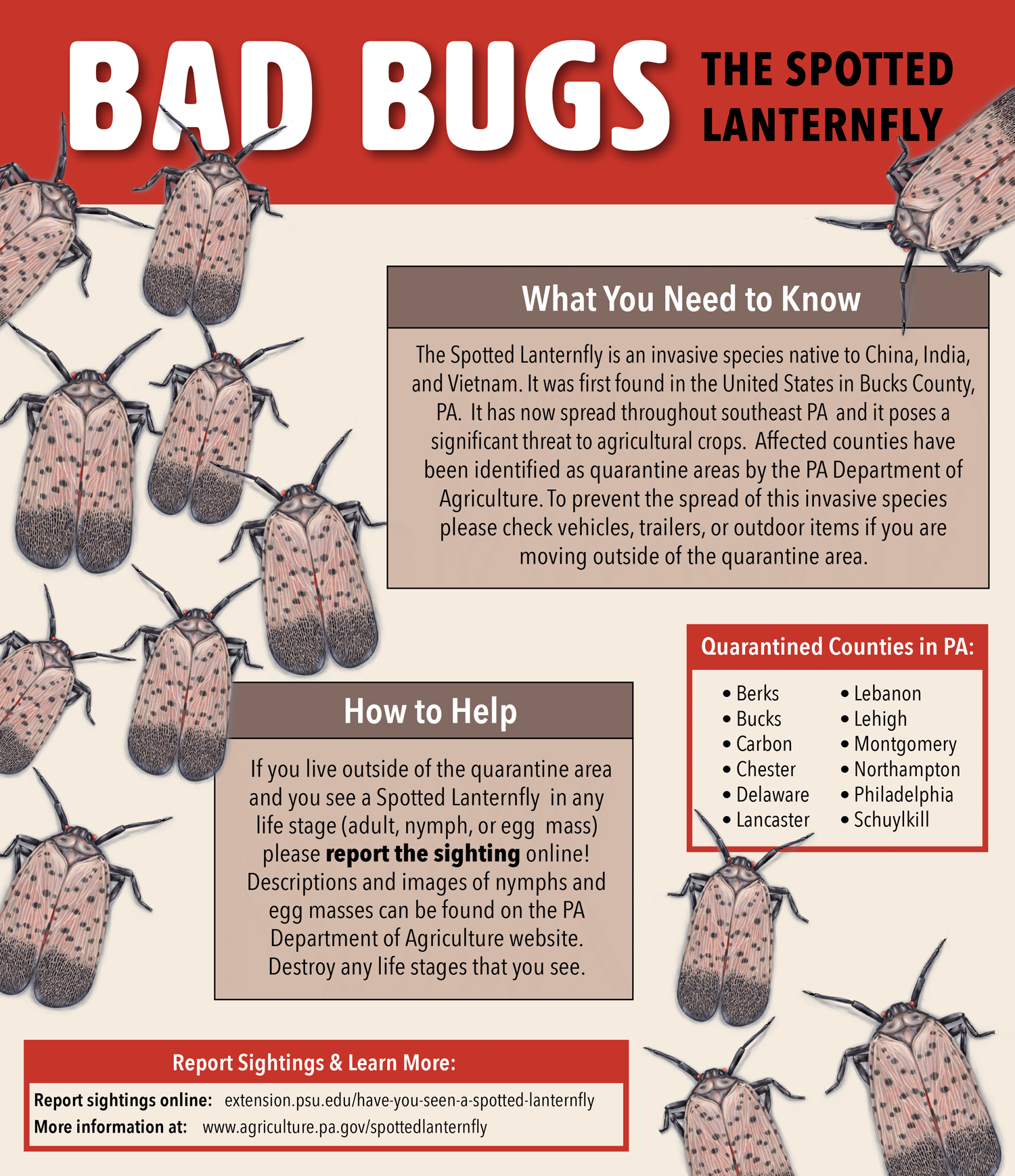
Bad Bugs: The Spotted Lanternfly, Illustration and educational poster by Kara Perilli
Artwork and models are often used in science museums as part of exhibits to depict and describe topics to the audience. Artwork can go beyond the complicated scientific language often used to describe topics, and translates the information into a universal image. Unlike reading an article or looking at a photograph, scientific artwork can be designed to include the main information in a concise way that can provide information and accommodate for audiences of all different levels of understanding.
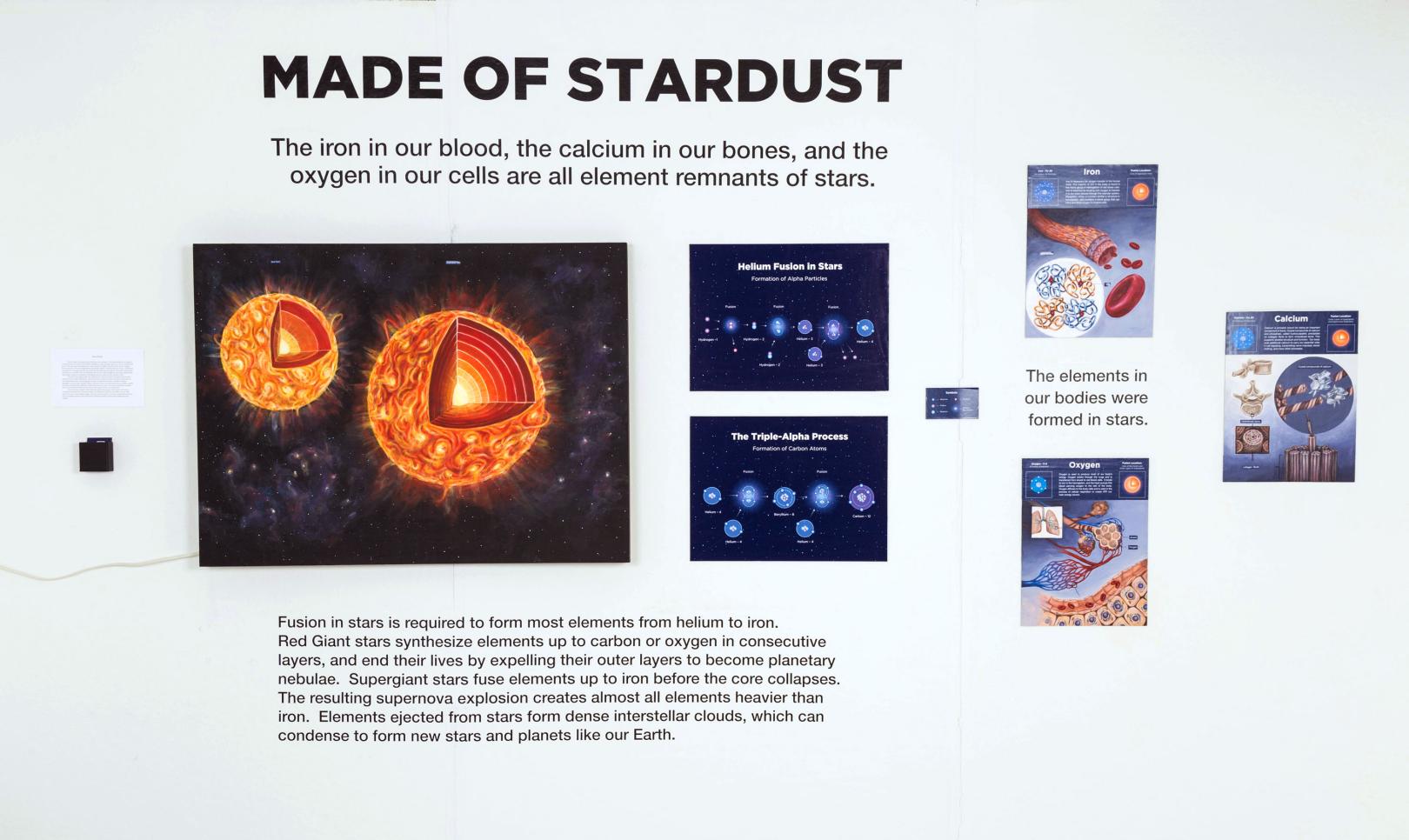
Made of Stardust, a single wall science and art exhibit layout by Kara Perilli
Patient education resources are one significant way that scientific illustration is used to aid in the medical field. These educational materials can play a significant role in helping patients learn about a diagnosis or a procedure, and the understanding they gain from accessible illustrations can help improve their health behaviors and status.
Medical education is also extended to medical professionals in training, who can learn a process, procedure, or anatomy through artwork. Medical illustrators collaborate with scientists and physicians to produce effective artwork that can be used to educate the next generation of medical professionals. Drawings, 3D models, and animations allow doctors to explore the subject before they begin learning through hands-on experiences. Below are some examples of medical illustrations created by Julia Lunavictoria that depict a surgical procedure and human anatomy.
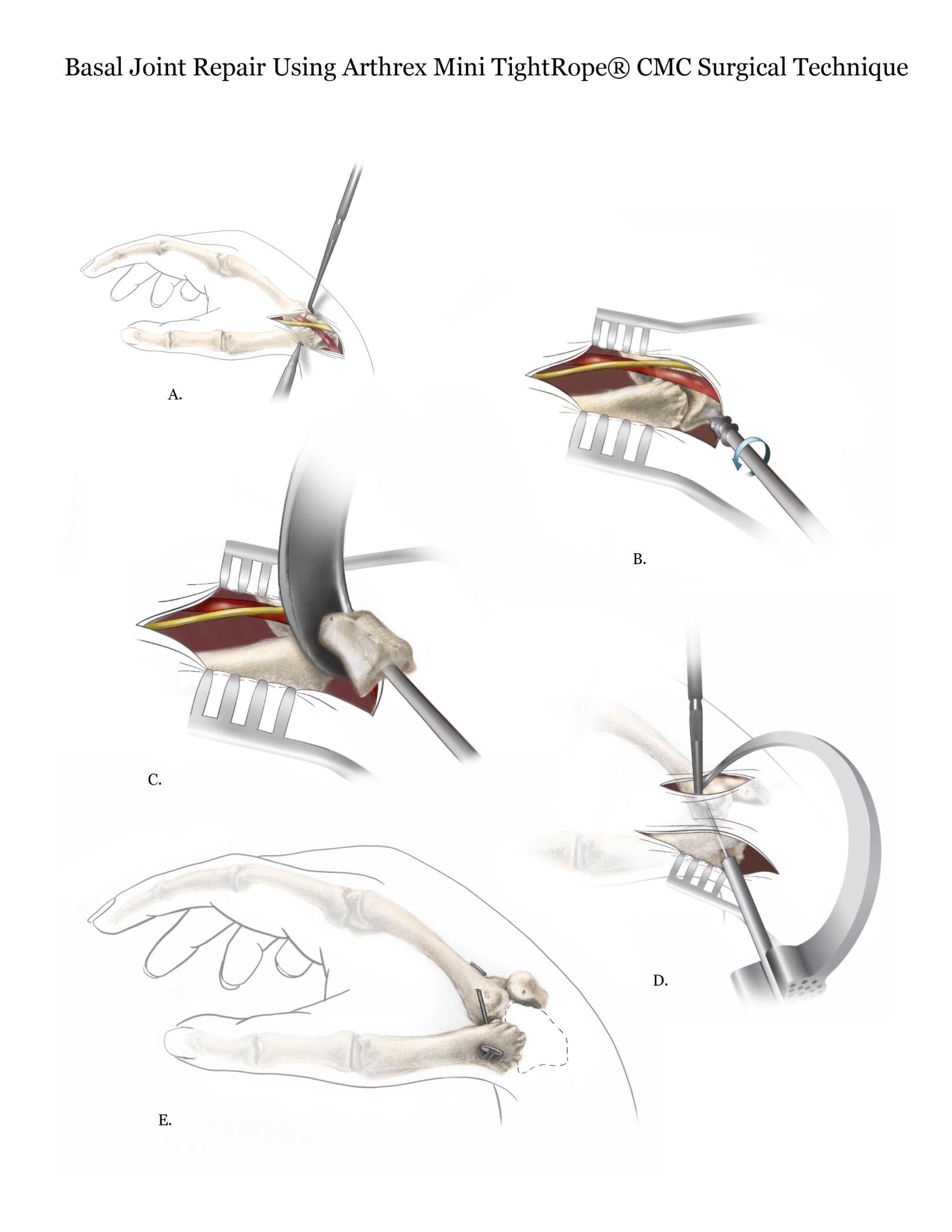
Basal Joint Repair (left) and The Rotator Cuff (right), Educational Illustrations by Julia Lunavictoria
Lastly, it is important to note that scientific illustrators often develop expertise within their specialties, many holding advanced degrees or even doctoral (Ph.D.) degrees in medicine, biology, and other related fields of study. Some illustrators become authors or co-authors of scientific journal articles because their work contributed greatly to the discoveries. Illustrators often must study the subject in such detail that they may make discoveries that the scientists they collaborate with may have overlooked. Overall, it is clear that scientific illustrators are an indispensable part of the scientific community.
By studying the visual aspects of a specimen and having the background of scientific studies, illustrators hold a unique place in the scientific community. Artwork can help advance the fields of science by bringing new understanding to a subject and sharing this information with professionals and the public.


